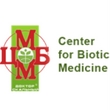Day 2 :
- Paths Of Biomarkers | Clinical Case Reports | Lifestyle Medicine | Preventive Medicines | Personalized oncology | Immunology infectious disease | Cardiology and vascular medicine | Personalized Medicine & its Innovations | Advances In Molecular Diagnostics | Market Strategies & Challenges In Personalised Medicine | Personalized Drug Therapy | Personalised Medicine In 21st Century | Pharmacogenomics: Convergence of Pharmacology & Genomics | Genomics & Personalized Medicine | Genetics of Ebola Outbreak | Approaches to Stem Cells | Nanotechnology: Future of Personalised Medicine
Location: Doubletree by Hilton Chicago North Shore Conference Center 9599 Skokie Blvd. Skokie IL 60077, USA
Session Introduction
Anatoly V. Skalny
Trace Element Institute for UNESCO, Russia
Title: Multielement profiling as an effective tool of predictive, perventive and personalized medicine
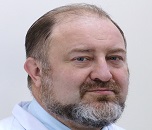
Biography:
Skalny has completed his PhD at the age of 28 and D.Sc at the age of 38. He is the vice-president of Trace Element – Institute for UNESCO, head of medical elementology chair of RUDN University, president of ANO Centre for Biotic Medicine, vise-president of Federation of European Societies on Trace Elements and Minerals, chairman of Russian Society of Trace Elements in Medicine, editor-in-chief «Trace Elements in Medicine» (Russia), member of editorial boards of "Journal of Trace Elements in Medicine and Biology" (Elsevier), and "Biological Trace Element Research" (Springer). He has published more than 400 papers, h-index 27 (RU).
Abstract:
Based on the database containing more than 500,000 cases from Russia and more than 40 countries since 2000 we have developed a medical technology for detection and correction of impaired mineral homeostasis. The basis of the technology is personalized diagnosis of trace element profile of the organism with subsequent correction using monoelement supplements and efficiency control. In contrast, it has been demonstrated that the use of vitamin-mineral complex has low efficiency due to: i) simultaneous administration of numerous minerals and trace elements, that may result in competition and ultimately, reduced bioavailability of one of the components (e.g. iron, copper, zinc); ii) the absence of personalized approach, as the patients obtain a standard commercial complexes of minerals and vitamins irrespectively of their real requirements; iii) problems with assessment of the vitamin-mineral complex efficiency. Therefore, the developed technology significantly improved correction of trace element status of the organism using the principles of personalized medicine. The current technology was successfully used in treatment of trace element disturbances in patients with neuropsychiatric (e.g., autism spectrum disorders), metabolic (e.g. diabetes) disorders, etc. The technology was also used in prophylaxis in persons with extreme lifestyle (soldiers, elite sportsmen, liquidators of nuclear explosion consequences in Chernobyl). Finally, personalized assessment of trace element status allows to reveal the targets for population health policies. In particular, it has been demonstrated that disturbances of trace element status are associated with demographic parameters and morbidity at the population-wide level, being indicative of the possible ‘macro’ effects of ‘micro’ elements.
Steven A. Feyrer-Melk
Director of Lifestyle Medicine,USA
Title: Personalized Care - Lifestyle Medicine - Behavioral Science - Technology:Â The Right Fit For Any Practice Model.Â

Biography:
Feyrer-Melk has developed a unique and practical background in Lifestyle Medicine, allowing him to effectively leverage technology and behavioral science to enhance personalized care. His extensive work with healthcare professionals and patients is grounded in proven health and lifestyle medicine principles, making him a thought-leader in the field. Dr. Feyrer-Melk serves as the Director of Lifestyle Medicine at the Optimal Heart Attack & Stroke Prevention Center, the Chief Science Officer for a Med-Tech company (Nudge, LLC) and is a valued consultant and speaker. He received his Ph.D. in Exercise Science & Wellness at Arizona State University under the direct guidance of Dr. Charles Corbin, and his M.Ed. in Human Performance at Bowling Green State University under Dr. Richard Bowers.
Abstract:
Modifiable personal lifestyle factors play significant and interconnected roles in predictive, preventive and personalized patient optimal health. Leveraging available cutting-edge Technology and Behavioral science models can maximize outcomes in a A Personalized Care Model. This session will help medical program developers and practitioners learn how to seamlessly incorporate and effectively use the proper practice-matched technology. The focus will be on understanding behavioral science as a powerful component of personalized care, identifying the best technologies for the practice, wearable technology, wireless health technology, health apps, and practice platform technologies.
Jacques S. Beckmann
University of Lausanne , Switzerland
Title: From Evidence-Based to Precision Medicine: Challenges and Opportunities
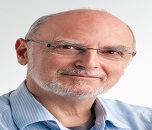
Biography:
Jacques S. Beckmann was, from end of 2012 till end of 2016, head of clinical bioinformatics at the SIB Swiss Institute of Bioinformatics. He was previously appointed, from October 2002-Sept 2012, Professor of Human Genetics and Director of the Department of Medical Genetics at the University of Lausanne (UNIL) as well as head of the Medical Genetics Service of the Centre Hospitalier Universitaire Vaudois (CHUV). In these functions, he has been involved in the reconstruction and consolidation of the hospital’s medical genetics service as well as the creation of a new department of Medical Genetics (altogether there were close to 100 people working in these two units). Previously, he held a chair as Full Professor at the Department of Molecular Genetics at the Weizmann Institute of Science, Rehovot, Israel. Initially trained in molecular genetics he then moved to genetics. In the 1980s, together with Prof. M. Soller from the Hebrew University, they pioneered the use of marker-assisted genetic improvement in plants and animals, focusing on Quantitative Trait Loci (QTLs). His interest shifted in 1990 to human genetics with a move to Paris, where he held successively senior research positions at the CEPH, Généthon (Evry), and finally, was involved, together with Mark Lathrop, in the creation of the Centre National de Génotypage (CNG, Evry), where he served as Deputy-Director. During those years, he contributed significantly to the elaboration of genetic, physical and gene maps of the human genome, as well as to the positional cloning of a number of disease loci involved in muscular dystrophy, diabetes and other diseases. His recent research interests also included genomic disorders as well as the genetic basis of complex traits. Prof. Beckmann has published close to 400 scientific peer-reviewed articles in molecular genetics, genetics and genomics and with about 32’000 citations.
Abstract:
Ground-breaking scientific developments in high-resolution, high-throughput data gathering technologies enable cost-effective collection and analysis of huge, disparate datasets on individual health. This is also accompanied by the emergence of clinical bioinformatics tools required for the analyses and interpretation of this wealth of data. These developments have triggered numerous initiatives in precision medicine, a data-driven and currently still, essentially a highly genome-centric initiative, centering on the individual. Proper and effective delivery of precision medicine poses numerous challenges. Foremost, precision medicine needs to be contrasted with the powerful and widely used practice of evidence-based medicine. The latter is informed by meta-analyses or group-centered studies from which mean recommendations are derived. These amount at first approximation to a “one size fits all” approach, whose major limit is that it does not provide adequate solutions for outliers, which for one or another trait we all are. In contrast to evidence-based medicine, one of the strengths of precision medicine lies in the area of individualized management, and this includes outliers.
Here, we argue that to achieve these objectives, it will be necessary to bridge between precision medicine and evidence-based medicine. We will also discuss the challenges and opportunities to bridge this gap thereby achieving clinical utility in precision medicine. First, clinical implementation of precision medicine will require worldwide and responsible data sharing, as well as regularly updated training programs. Second, it will rely on a systemic approach, encompassing among others, all human organs, our complex multicomponent holobiome, i.e., including our virome and microbiome, and our environment. Furthermore, we project that through collection, analyses and sharing of standardized medically relevant data globally, evidence-based precision medicine will shift progressively from therapy to prevention, thus leading eventually to improved, clinician-to-patient communication, citizen-centered healthcare and sustained well-being.
Shanrong Zhao
Pfizer Worldwide Research & Development
Title: Isoform quantification in RNA sequencing: challenges and applications
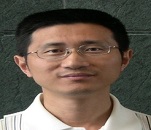
Biography:
Shanrong is Director, Computational Biology and Bioinformatics at Pfizer Inc. More than 20 years of experience in computer science, statistics, genetics and computational biology. Deep scientific knowledge in immunology, autoimmune disease, antibody design and biomarker discovery. Have a demonstrated track of records in scientific initiative, innovation, and leadership, including 4 patents, over 20 peer-reviewed publications, and 20 invited talks at international meetings. A recognized pioneer in the field of RNA-seq, big data analysis and cloud computing. Enthusiastic about using NGS technology, computational approaches and informatics systems to drive drug discovery and biological research.
Abstract:
Due to alternative splicing, over 90% of human genes have multiple transcript isoforms. Isoforms of the same gene can play distinct or even opposite biological rules. For instance, gene TP53 has an important role in oncology and different cancer types show different expression profiles of its transcript isoforms. Therefore, it is tempting to quantify RNA-Seq experiments at transcript level, rather than at the gene level. However, estimating the expression of individual isoform is intrinsically challenging because different isoforms of a gene usually have a high proportion of genomic overlap.
Recently, a number of tools have been developed for RNA-seq isoform quantification, including RSEM, Cufflinks, eXpress, Tigar2, Kallisto, Salmon and Sailfish. We performed a systematic evaluation on those methods using both simulated dataset and UHRR and HBRR, and furthermore investigated the impact of gene/isoform structures on the accuracy of isoform quantification. Besides, the library size and relative abundance of different isoforms also influence the quantification results. We determined why RNA-seq is unable to detect less abundant TP53 transcripts and discussed its implications for the general interpretation of RNA-seq data.

Biography:
Jain is a neurosurgeon with career in North America. After retirement from neurosurgery, he started a second career in pharmaceutical medicine and biotechnology in Switzerland. He is developing personalized medicine since 1998, and wrote the first monograph on this topic, which evolved into a textbook and the 2nd edition was published by Springer in 2015. His 465 publications include 27 books (5 as editor and 22 as the author). One of the books is Handbook of Nanomedicine (3rd ed Springer, 2017). Currently he is a Fellow of the Faculty of Pharmaceutical Medicine of the Royal College of Physicians of UK.
Abstract:
Personalized medicine simply means the prescription of specific therapeutics best suited for an individual. It is usually based on pharmacogenetic, pharmacogenomic, transcriptomic, pharmaco-proteomic and pharmacometabolomic information. Other individual variations in patients and environmental factors are also taken into consideration. Concept of personalized medicine is the best way to integrate various biotechnologies and their translation into clinical applications. Advances in nanobiotechnology will facilitate the development of personalized medicine by: (1) Nanodiagnostics will improve the sensitivity and extend the present limits of molecular diagnostics, point-of-care devices, biochips and biosensors; (2) improve discovery of biomarkers; (3) facilitate integration of diagnosis and therapy, which is an important part personalized medicine; and (4) nanomedicines are suitable for targeted delivery to lesions. Important areas of application include oncology, cardiology and neurology. In case of cancer the variation in behavior of cancer of the same histological type from one patient to another is also taken into consideration in addition to variations among patients. Personalization of cancer therapies is based on a better understanding of the disease at the molecular level and nanotechnology will play an important role in this area. Anticancer nanomedicines can be targeted to the tumor and spare the normal tissues to reduce systemic toxicity. Personalized nanomedicines will be more effective and safer than conventional medicines. In conclusion, nanobiotechnology is playing an important role in the development of personalized medicine.
Vladislav S Baranov
D.O.Ott’s Institute of Obstetrics,Gynecology and Reproductology, Russian Federation
Title: Predictive Medicine Evolution
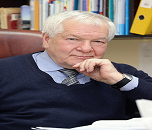
Biography:
Vladislav S.BaranovBorn in 1940, graduated from the State Medical Institute in Lvov (Ukraina), took postgraduate courses and received a PhD degree in Saint-Petersburg (Russia) in 1976 . The Chief of laboratory for prenatal diagnosis of inherited and inborn diseases at the Ott’s Institute of Obstetrics, Gynecology & Reproduction. Interested in genetic and cytogenetic aspects of early development, gene testing of inherited predisposition to common disorders , personalized predictive medicine, gene therapy. Professor, Corresponding Member of Russian Academy of Sciences, Honorary Scientist, Chief City Expert in Medical Genetics, , The author and co-author of 29 books and over 400 scientific papers.
Abstract:
Predictive medicine (PM) as a kid from natural marriage of Human Genome and Medicine has now converted into quickly expanded area of medical genetics. Main goal of PM may be attributed to early identification of persons, predisposed to sever complex diseases before their obvious clinical manifestation and thus to their prediction, prevention, diagnostics and efficient personalized treatment. Progress of PM runs in parallel to spectacular achievements of human genome studies, advances of molecular technologies and their implementation. Started in 2000 as Predictive Preventive Personalized Medicine (3P -medicine) it soon acquired its Participatory trait and is now treated as 4P-medicine. After short period of recession in 2009-2012 provoked by “missing heritability” dilemma time for the robust recovery of PM comes. New system genetics approach (SGA) paved the way to translational medicine which obvious benefits stems from the complex analysis of common disorders. Brief review of European PPPM Association program of 30 years development and similar Precision Medicine program recently launched in the USA are presented. Thus for 20 years period the PM has passed a long way from primitive genetic testing to systemic genetic analysis, from Genetic Pass suggested as far as 2000 to Electronic Genetic Chart of Health predicted in 2015.
William G Kearns
President and Director of AdvaGenix, USA
Title: Personalized Genomics within Reproductive Medicine
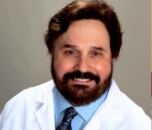
Biography:
William G. Kearns earned his doctorate at Eastern Virginia Medical School and completed his advanced training during a three-year fellowship in medical genetics at the McKusick-Nathans Institute of Genetic Medicine of The Johns Hopkins University School of Medicine. Kearns is well known in the field of genetics, particularly preimplantation genetics, and continues to serve on the faculty of Johns Hopkins as a medical geneticist and associate professor. His duties include training fellows and graduate students in genetics and reproductive endocrinology. Widely known nationally and internationally for his expertise in genetics, Dr. Kearns is uniquely qualified in his ability to devise and implement genetic testing strategies in order to offer IVF patients an opportunity to achieve their goal – a healthy baby. He brings valuable experience to the diagnostic and research laboratory, including 13 years in starting and directing a preimplantation genetic diagnostic laboratory prior to founding AdvaGenix.
Abstract:
With the rapid pace of progress in the fields of biotechnology, genetics, and genomics, molecular genetic profiling may soon become an integral tool for clinicians to guide individualized management of many medical conditions. Personalized medicine (also termed personalized genomics, genomic medicine, or precision medicine) refers to the application of patient-specific profiles, incorporating genetic and genomic data as well as clinical and environmental factors, to assess individual risks and tailor prevention and disease-management strategies. Personalized medicine involves the use of an individual's genetic profile to guide decisions made in regards to the prevention, diagnosis, and treatment of disease. The definition encompasses a broad range of current clinical practices in which genomic results are used to guide patient care. We will discuss the applications of whole exome sequencing and reproductive medicine based upon a family profile for genetic diseases that are lethal or with high morbidity. Trio data will be presented and discussed regarding the use and application of personalized medicine in respect to a family’s desire to have healthy children.
J. Hescheler
Institut für Neurophysiologie, Germany
Title: Stem cells as a tool for companion diagnostics and personalized medicine
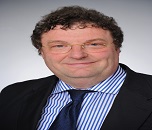
Biography:
Jürgen Karl-Josef Hescheler (born 2 May 1959) is a German physician and stem cell researcher. He is director to the Institute for Neurophysiology and a university professor at the University of Cologne. Prof. Hescheler is one of the most eminent and the most productive stem cell researchers worldwide, averaging more than 1000 citations of his publications per year. Hescheler has been working with embryonic stem cells since the late 80’s. He became the first researcher to accomplish an electrophysiological characterisation of stem cells and was also among the first scientists in Germany obtaining permission to do research on human embryonic stem cells.
Abstract:
Due to their ability to reproduce the embryonic, neonatal and adult differentiation of all different organotypic cellular phenotypes, pluripotent stem cells represent an ideal tool to study physiological processes of embryogenesis under in vitro conditions as well as to provide the basis of cellular therapeutics, to build up test assay systems for drug discovery or toxicology and to develop novel disease models for companion diagnostics within personalized medicine. In particular, embryonic (ES) and induced pluripotent stem (iPS) cells can reproduce all organotypic electrophysiology, signalling cascades and genes involved in the development (functional genomics). This occurs spontaneously within three-dimensional cell aggregates – embryoid bodies (EBs) – which I developed 25 years ago. To select only one lineage, e.g. the cardiac lineage, and to allow the identification of the transplanted cells, transgenic ES and iPS cells were used. They contained a vector with two cloning sites for EGFP and a puromycin resistance for selection under the alpha-MHC promoter – a technology which allowed an easy transfer to bioreactor systems for large scale production.
We aimed at generating iPS cell-derived cardiomyocytes (CMs) and their molecular and functional characterization in comparison to CMs derived from established ES cells on a transcriptomic and electrophysiological level. To demonstrate the ability of ES cells for regenerative medicine and tissue repair, cardiomyocytes differentiated from ES cells were injected into the cryoinfarcted left ventricular wall of adult wild-type mice. Translation from the laboratory into the clinic is one of the remaining key issues remaining for applied stem cell research.
Within two European consortia, ESNATS and DETECTIVE, under my coordination a battery of toxicity tests was developed using human ES or human iPS lines subjected to different standardised culture protocols. Tests cover embryoid bodies in different developmental stages including early embryonic stages (embryotoxicity), neuronal lineages (neurotoxicity), complemented with test systems for hepatic metabolism and cardiac development (cardio-toxicity). Predictive toxicogenomics and -proteomics markers were identified allowing a better predicitvity of human test systems, to reduce, refine and replace animal tests, to lower testing costs, and to support medium/high throughput testing which will be of relevance for companion diagnostics and personalized medicine. .
Reprogramming of fibroblasts from patients with poly- or monogenetic diseases including LQT3 or CPVT syndrome resulted in generation of iPS cells for disease modelling. This novel approach may also enable patient-specific cell replacement therapies, which appears
to be an indispensable prerequisite for a later use in clinics. iPS cells from patients represent a new diagnostic tool for precision medicine, for better analysis of the pathophysiology and to develop personalised strategies for an optimized therapy.
Moonjae Cho
Jeju National University, Republic of Korea
Title: The Synergy Effect of TMF and Glycitin on Wound Repair

Biography:
Moonjae Cho is currently working in the Department of Biotechnology, Jeju National University, Republic of Korea. He has published numerous research papers and articles in reputed journals and has various other achievements in the related studies. He has extended his valuable service towards the scientific community with his extensive research work.
Abstract:
Keratinocyte-fibroblast interactions are critical for skin repair after injury. During the proliferative phase of wound healing, proliferation, migration and differentiation of these cells are the major mechanisms leading to tissue remodeling. We have previously reported that glycitin, a major soy isoflavone, stimulates dermal fibroblast proliferation; and the phytochemical, 4′,6,7-trimethoxyisoflavone (TMF), induces migration of HaCaT keratinocyte cells. We therefore investigated whether these compounds display synergistic effects on skin cells during wound healing in vitro and in vivo. Co-treatment with TMF and glycitin synergistically promotes the proliferation and migration of both keratinocytes and dermal fibroblasts, with a 1:1 ratio of these compounds showing the greatest efficacy in our co-culture system. This keratinocyte-fibroblast interaction occurred via the secretion of TGF-β, and the induction of differentiation and proliferation was confirmed in both indirect and direct co-culture assays. In an excisional and burn wound animal model, mice treated with a 1:1 ratio of TMF and glycitin showed faster wound closure, regeneration and scar reduction than even the positive control drug. These data indicate that two isoflavones, TMF and glycitin, act synergistically to promote wound healing and anti-scarring and could potentially be developed together as a bioactive therapeutic for wound treatment.
Maria Voyatzi
Aristotle Uninersity of Thessaloniki, Greece
Title: Efficacy Of Lasers on Pigmentary Lesions, Telangiectasias , Hemangiomas and Rejuvenation
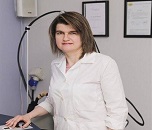
Biography:
Maria Voyatzi completed her PhD at the age of 26 years from the Aristotle Uninersity of Thessaloniki, Greece and postdoctoral studies from the Hospital of Dermatological and Venereological Diseases of THESSALONIKI , State Clinic. She has published more than 15 papers in reputed journals and participated in many hellenic, european and world congresses.
Abstract:
Our purpose is to study the efficacy of the Alexandrite laser (755nm) and the fractional laser when treating pigmentary lesions , the efficacy of the NdYAG Laser ( 1064 nm ) when treating telangiectasias and hemangiomas and the efficacy of the NdYAG Laser and fractional laser on rejuvenation.We used the data from our private office from the past five years (2011-2015). We treated 1000 patients with freckles with Alexandrite laser, 200 patients with melasma with fractional laser, 100 patients with postinflammatory hyperpigmentation with Alexandrite laser and 60 patients with postinflammatory hyperpigmentation with fractional laser. We also studied the side effects of the therapies. Alexandrite laser had excellent results on freckles, while the combination of chemical peels and fractional laser was satisfactory for the treatment of melasma. Post inflammatory hyperpigmentation had an intermediate response. The recurrence rates were higher in melasma and the side effects were generally minimal. We also treated 500 patients with telengiectasias and 300 patients with hemangiomas with NdYAG Laser. As far as telangiectasias were concerned, the results were much better when the face was treated . In contrast, the recurrence rates were much higher when the legs were treated. The results were impressive in almost all cases of cherry hemangiomas. The combination of NdYAG Lasers and fractional lasers on a monthly basis had satisfactory results in rejuvenation.
Somi Kim Cho
Jeju National University, Republic of Korea
Title: Therapeutic implication of the phytochemicals in human gastric cancer cells

Biography:
Somi Kim Cho is currently working in the Department of Biotechnology, Jeju National University, Republic of Korea . Somi Kim Cho She has published numerous research papers and articles in reputed journals and has various other achievements in the related studies. She has extended her valuable service towards the scientific community with her extensive research work.
Abstract:
The cysteine-rich angiogenic inducer 61 (CYR61), an extracellular matrix-associated protein, is involved in survival, tumorigenesis, and drug resistance. There is an increasing demand for developing agents that target CYR61. Hence, we study the effects of flavones against CYR61-overexpressing human gastric adenocarcinoma AGS (AGS-cyr61) cells. Quercetin (1) down-regulates CYR61 and concomitantly decreases in the levels of MRP1 (multidrug resistance-associated protein 1) and nuclear factor NF-kappa B (κB) p65 subunit, (2) reverses multidrug resistance, and (3) inhibits colony formation in AGS-cyr61 cells. AGS-cyr61 cells treated with quercetin at sub IC50 over a range of 5-FU or ADR concentrations manifested strong synergistic effects with these two drugs. Our results demonstrate that CYR61 is a potential regulator of ABC transporters and quercetin can be the novel agent that improves the efficacy of anticancer drugs by down-regulating CYR61 and ABC transporters.
Histone deacetylase 6 (HDAC6) is a unique cytoplasmic enzyme which contributes to malignant progression in various cancer. We found that compound D inhibits HDAC6 activity, increases acetylated α-tubulin, reduces the level of β-catenin, and suppresses cell proliferation. Increase of α-tubulin acetylation by compound D resulted in tubulin polymerization, and consequently, induced aberrant mitosis. Moreover, treatment with high concentrations of compound D induces cell death by mitotic catastrophe, whereas low concentration of compound D induces senescence with upregulation of p21 and Rb, and increase in the phosphorylation of mTOR and the β-galactosidase activity. Therefore, compound D can also be considered as a promising new candidate for anti-cancer drug development.
Rizwan Ya. Abdullaiev
Kharkiv National Medical University, Ukraine
Title: Ultrasonic characteristics of herniated intervertebral Ñervical discs in older children

Biography:
Rizvan Abdullaev is currently working in the Kharkiv National Medical University Ukraine. He has published numerous research papers and articles in reputed journals and has various other achievements in the related studies. He has extended his valuable service towards the scientific community with his extensive research work.
Abstract:
The aim of the study was to study the semiotics of the herniated intervertebral disks (IVD) of the cervical spine in older children using ultrasonography (US).
Materials and methods. The study included the results of ultrasound examination of 19 children with degenerative changes of the IVD with violation of the integrity of the fibrous ring (FR) and involvement of the elements of the vertebral canal (VC) in the pathological process. In total, 114 IVD were examined, of which changes were detected in 61 (53.5%) disks. US was conducted at the level of disks C2-C3, C3-C4, C4-C5, C5-C6, C6-C7, C7-Th1. Diagnosis of hernia of the IVD was based on the evaluation of the structure of the pulp nucleus (PN) and FR, registration of the FR rupture, narrowing of the PN and radicular canals.
Results. Herniated discs were detected in children aged 16-18 years. Hernia is diagnosed in 19 (16.7%) disks. The rupture occurred in the posterior part of the discs, the free fragment of the PI ripping the thin sheet of the posterior longitudinal ligament, got into the epidural space, being located next to the veins of the epidural plexus. In 8 (42.1%) cases, hernia was formed at the level of C5-C6, in 6 (31.6%) - at the level of C4-C5, in 3 (15.8%) - at the level of C2-C3 and in 2 ( 10.5%) of cases at the level of C6-C7.
The most frequently recorded paramedian hernia - in 12 (63.2%), then the median - in 5 (26.3%) cases and less often in the posterolateral - in 2 (10.5%) cases. The greatest decrease in the sagittal size of the PN was observed with the median size, and the cross-sectional area with the paramedian hernia
Conclusions. Ultrasound examination is an alternative method of diagnosing herniated intervertebral cervical discs in older children that allows determining the form and level of localization of the degenerative process.
Natalia Malara
Magna Graecia University School of Medicine, Italy
Title: The promising role of Circulating Tumour Cells in the personalized immunotherapy against cancer: why and how

Biography:
Natalia Malara MD PhD, is a medical oncologist with competence of translational medicine, nanotechnology, toxicology in oncologic and cardiovascular field. She conducts clinical and laboratory investigations focusing her attention on circulating tumor and endothelial cells. He acquired a solid experience in nano-biotechnology techniques with translational approach in medicine collaborating with Bionem group guided by Prof Di Fabrizio. He begin her collaboration with Prof Mollace in July 2009, and since then his research activities are also focused on the project of pre-clinical model finalized to improve pharmacological applications in clinical.
Abstract:
The immunotherapy in cancer is based on the ancient concept of activating an effective immune-mediated reaction direct against tumour cells. How to efficiency activate the immune system in this direction is still a challenge. In fact, despite the rapid increase of knowledge in oncology has contributed to improve immunotherapeutic protocols, some issues remain unresolved. Three key points represent the main challenges causing vaccine-resistance: 1. continuous dynamic changing of cancer tissue determines intrinsic tumour cell alterations; 2. adjustments in the tumour microenvironment; 3. low immune recognition against cancer cells. To learn the molecular changes, that take turns insight tumor during its progression depends on the possibility to analyse cancer cells in real time. Often, the clinicians do not have sources of available tumour cells. In fact, the biopsy of the tumour tissue cannot be repeated many times, for systemic and local complications for the patient . On the other hand, the development of vaccine-resistance depends by the heterogeneity of tumor tissue. The cancer heterogeneity represents a limit in the design and application of immunotherapy adopting specific immunogenic protein. The CTCs represent the cancer cell population released in the blood stream and can be considered like a cellular “summary” of the systemic cancer disease. Recent studies report standardized methodology to collect and short-time in vitro expanded CTCs. The protocol, making available cancer cells without modifying their heterogeneity, provides interesting solutions to overcome the degree of immune tolerance and, on the other hand, to reduce the autoimmune spiral triggered by the cryptic epitopes.
Segundo Mesa Castillo
Psychiatric Hospital of Havana, CUBA
Title: Direct evidence of viral infection and mitochondrial alterations in the brain of fetuses at high risk for schizophrenia
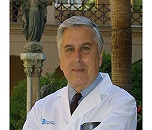
Biography:
Segundo Mesa Castillo. As Specialist in Neurology, he worked for 10 years in the Institute of Neurology of Havana, Cuba. He has worked in Electron Microscopic Studies on Schizophrenia for 32 years. He was awarded with the International Price of the Stanley Foundation Award Program and for the Professional Committee to work as a fellowship position in the Laboratory of the Central Nervous System Studies, National Institute of Neurological Diseases and Stroke under Dr. Joseph Gibbs for a period of 6 months, National Institute of Health, Bethesda, Maryland, Washington D.C. USA, June 5, 1990.
Abstract:
There is increasing evidences that favor the prenatal beginning of schizophrenia. These evidences point toward intra-uterine environmental factors that act specifically during the second pregnancy trimester producing a direct damage of the brain of the fetus. The current available technology doesn't allow observing what is happening at cellular level since the human brain is not exposed to a direct analysis in that stage of the life in subjects at high risk of developing schizophrenia. Methods. In 1977 we began a direct electron microscopic research of the brain of fetuses at high risk from schizophrenic mothers in order to finding differences at cellular level in relation to controls. Results. In these studies we have observed within the nuclei of neurons the presence of complete and incomplete viral particles that reacted in positive form with antibodies to herpes simplex hominis type I [HSV1] virus, and mitochondria alterations. Conclusion. The importance of these findings can have practical applications in the prevention of the illness keeping in mind its direct relation to the aetiology and physiopathology of schizophrenia. A study of amniotic fluid cells in women at risk of having a schizophrenic offspring is considered. Of being observed the same alterations that those observed previously in the cells of the brain of the studied foetuses, it would intend to these women in risk of having a schizophrenia descendant, previous information of the results, the voluntary medical interruption of the pregnancy or an early anti HSV1 viral treatment as preventive measure of the later development of the illness.
Livija Sušić
Health Centre Osijek, Croatia
Title: Arrhythmogenic right ventricular cardiomyopathy with multiple thrombi – case report
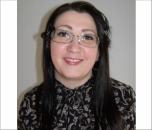
Biography:
Livija Sušić has completed Faculty of Medicine at the age of 24 years from J. J. Strossmayer University, Osijek, Croatia. She is internist and head of specialist-consultation Department in Health Centre Osijek. She is also a Post – Graduate student on J. J. Strossmayer University, Faculty of Medicine. She is at the beginning of the scientific career, published 4 papers till now.
Abstract:
Arrhythmogenic right ventricular cardiomyopathy (ARVC) is an inherited cardiomyopathy commonly transmitted as an autosomal dominant trait, characterized by incomplete penetrance and variable expressivity. So far 13 disease genes have been identified, responsible for approximately 60% of all ARVC cases. The pathological consists of a dystrophy of right ventricle (RV) myocardium with fibro-fatty replacement which leads to RV aneurysms dilatation, providing a supstrate for life-treatening arrhythmias. The course of the disease is divided into four main stages: subclinical, overt electrical, RV dysfunctional and biventricular late stage. Dilatation of the RV and global or focal wall motion abnormalities are supposed to increase the risk of thrombus formation. It is estimated that annual thromboembolic incidence is 0,5/100 patients, which is extremely rare considering the prevalence of disease being between 1 per 2000 and 1 per 5000 inhabitants. We present the case of 61-year-old female patient with multiple thrombi in a cavity of RV who had a combination of ARVC and hereditary trombophilia (homozygous mutation on 5G PAI- 1 allele). It is very rare combination and diagnostic challenge for us. Considering that diagnostic protocol went retrograde from rare complication according to cause and that it included anamnesis, laboratory tests, interpretation of ECG and holter ECG monitoring, multimodal imaging methods ( TTE, TEE, MRI, multislice CT, PET CT, coronarography), surgical procedure with extirpation of multiple RV masses and pathohistological analysis, and molecular markers of inherited thrombophilia, we believe that this is phenomenal example of the application of personalized medicine into practice.

Biography:
Seyedeh Afrooz Azimi has condidated in PhD degree from Mashhad Medical University . She is the Quality Manager in Atieh Hospital in Tehran .She researches on NSCLC Diagnostic biomarkers in Dr. Masih Daneshvari Hospital ,lung Center of Shahid Beheshti Medical University and she cooperates to published texts in scientific & research center.
Abstract:
Epigenetic in Lung Cancer:The concepts of personalized medicine can be applied to new and transformative approaches to health care.Epigenetic is based on the dynamics of systems biology and uses predictive tools to evaluate health risks and to design personalized health plans to help patients mitigate risks,prevent disease and to treat it with precision when it occurs. Every person has a unique variation of the human genome.Although most of the variation between individuals has no effect on health, an individual's health stems from genetic variation with behaviors and influences from the environment and Epignetic can also be used to predict a person’s risk for a particular disease and more effectve than one or even several genes.
One of the largest issues is the fear and potential consequences for patients who are predisposed after genetic testing or found to be non-responsive towards certain treatments. This includes the nutrition,life style,job effects on patients due to genetic testing results. The right of family members who do not directly consent is another issue, considering that genetic predispositions and risks are inheritable. The implications for certain ethnic groups and presence of a common allele would also have to be considered.
We received the whole information of patients with NSCLC In this survey that NSCLC is Multi factorial disease and related to Epigenetic .If we want to predict the risks of the disease ,we need to know more about the effects, life style and the personal behaviors more than genetic and Direct exposed parameters .Maybe in future we could to say there is difference for description of disease based on personal life and Epigenetic.
Roman Ya. Abdullaiev
Kharkiv National Medical University,USA
Title: Ultrasonic characteristics of the protrusions of lumbar intervertebral discs in older children

Biography:
Roman Abdullaev is currently Studying in the Kharkiv National Medical University Ukraine. He has published numerous research papers and articles in reputed journals and has various other achievements in the related studies. He has extended his valuable service towards the scientific community with his extensive research work.
Abstract:
The aim of the study was to study the semiotics of the protrusions of intervertebral disks (IVD) of the lumbar spine in older children using ultrasonography (USG).
Materials and methods. The study included the results of ultrasound examination of 63 children with degenerative changes of the IVD without violating the integrity of the fibrous ring (FR) and involvement of the elements of the vertebral canal (VC) in the pathological process. In total, 315 IVD were examined, of which changes were detected in 72 (22.9%) disks. USG was conducted at the level of disks L2–L3, L3–L4, L4–L5, L5–S1. Diagnosis of protrusion of the disc was based on a change in the structure of the pulpous nucleus, thinning and protrusion of the fibrous ring toward the vertebral canal for more than 2 mm, reducing the anteroposterior size of the vertebral or radicular canals.
Results. Paramedian protrusions occurred in 31 (43.1%) cases, posterolateral protrusions in 18 (25.0%), median - in 15 (20.8%), and circular - in 8 (11.1%) cases, respectively. The protrusion of disks at the level L2–L3 was observed in 3 (4.2%) cases, L3–L4 in 19 (26.4%) cases, L4–L5 in 27 (37.5%), and L5-S1 - in 23 (31.9%) cases, respectively. The greatest decrease in the sagittal size of the VC was observed with the median size, and the cross-sectional area with the paramedian hernia.
Conclusions. Ultrasound examination is an alternative method of diagnosing protrusions intervertebral lumbar discs in older children that allows determining the form and level of localization of the degenerative process.

